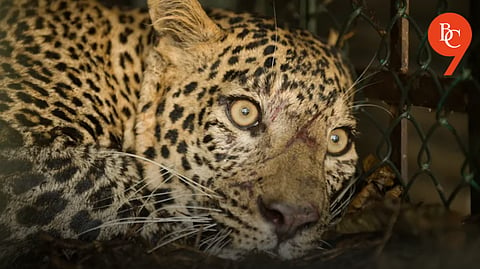

In an initiative for wildlife research and conservation, scientists from the Wildlife Institute of India (WII), in collaboration with the Maharashtra forest department, have launched India’s first camera-collar project to monitor leopards in Junnar, Pune district. This pioneering project comes in response to a surge in human-leopard conflict in the region, which has seen a significant rise in leopard populations and frequent incursions into human habitats, resulting in multiple fatalities and injuries in recent years.
As part of the pilot, a GPS-enabled camera collar was fitted onto a wild male leopard in Junnar in December 2024. The collar, programmed to record 30-second video clips every hour, captured over 1,000 unique clips during its three-month deployment. This technology provides researchers with a “leopard’s-eye view” of its daily movements, hunting patterns, and navigation through agricultural landscapes and human settlements; insights previously unattainable with traditional radio collars or camera traps.
The collar also records environmental data such as temperature and humidity, allowing scientists to analyze how leopards interact with their surroundings and adapt to various challenges. The footage, recently extracted after the collar’s safe removal, is now being analyzed to better understand leopard behavior and the factors driving conflict with humans.
Junnar tehsil has become a hotspot for human-leopard conflict due to its vast agricultural lands, abundant prey (including domestic animals), and growing leopard population. Between March and December 2024, at least 11 human deaths were attributed to leopard attacks in the area, with even more injuries and livestock losses reported. The new camera-collar project builds on previous research efforts, including radio-collaring and camera trap studies, to help forest officials develop more effective conservation and conflict mitigation strategies.
This is the first time in India that a camera collar has been used on any wild animal, marking a significant leap in the use of advanced technology for wildlife monitoring. Globally, camera-collaring is gaining popularity, but the Junnar project sets a precedent for similar studies with other species, such as tigers, in India.
Researchers believe the insights from this project will be crucial for designing targeted interventions, promoting coexistence, and ultimately reducing human-wildlife conflict in regions like Junnar.
